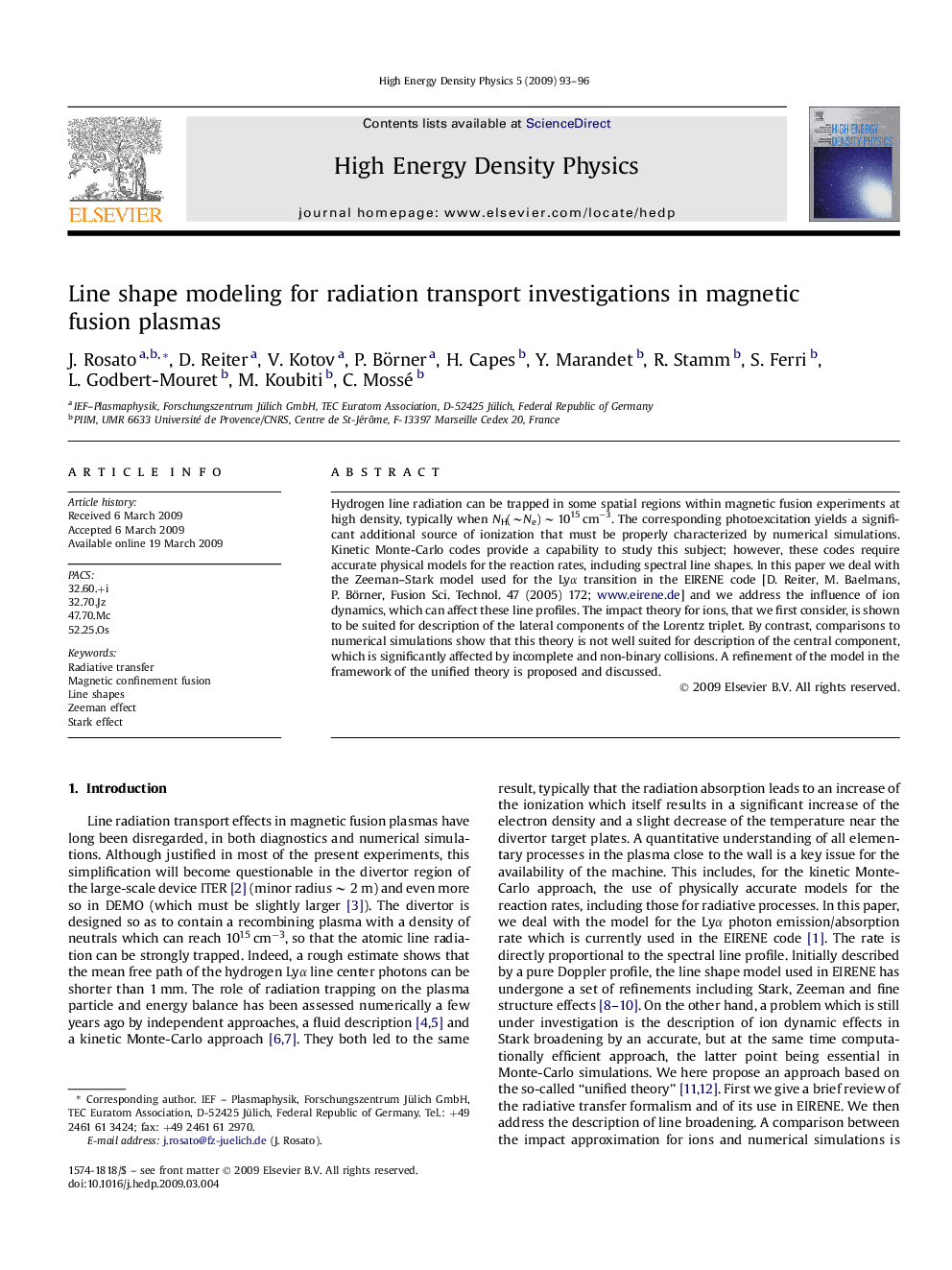| Article ID | Journal | Published Year | Pages | File Type |
|---|---|---|---|---|
| 1772789 | High Energy Density Physics | 2009 | 4 Pages |
Hydrogen line radiation can be trapped in some spatial regions within magnetic fusion experiments at high density, typically when NH(∼Ne) ∼ 1015 cm−3. The corresponding photoexcitation yields a significant additional source of ionization that must be properly characterized by numerical simulations. Kinetic Monte-Carlo codes provide a capability to study this subject; however, these codes require accurate physical models for the reaction rates, including spectral line shapes. In this paper we deal with the Zeeman–Stark model used for the Lyα transition in the EIRENE code [D. Reiter, M. Baelmans, P. Börner, Fusion Sci. Technol. 47 (2005) 172; www.eirene.de] and we address the influence of ion dynamics, which can affect these line profiles. The impact theory for ions, that we first consider, is shown to be suited for description of the lateral components of the Lorentz triplet. By contrast, comparisons to numerical simulations show that this theory is not well suited for description of the central component, which is significantly affected by incomplete and non-binary collisions. A refinement of the model in the framework of the unified theory is proposed and discussed.
